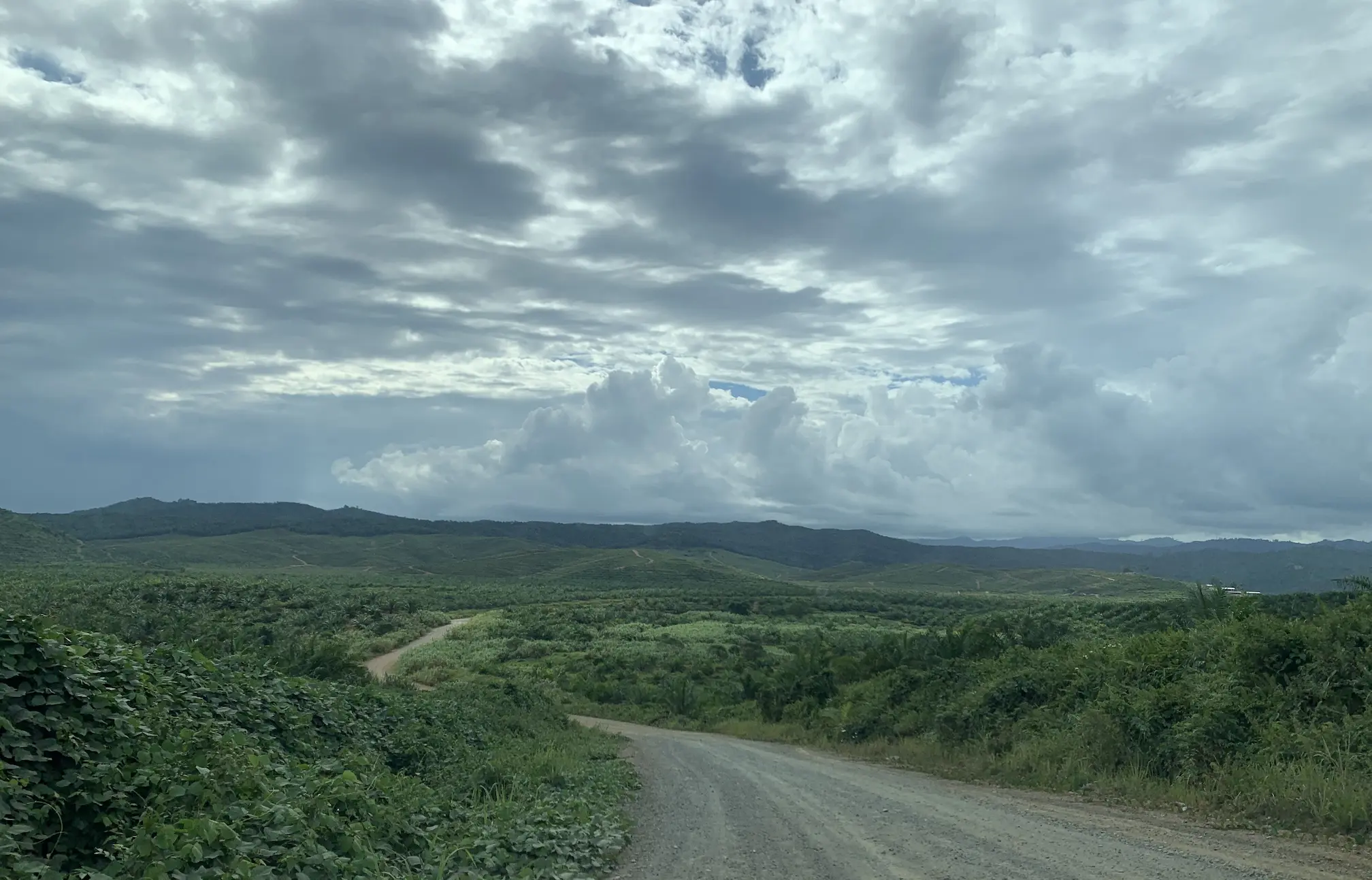Build. Operate. Manage.
We work on a "Build, Operate & Manage" basis, where we choose a site based on its location and economic feasibility. Once chosen, we construct the production facility and start the manufacturing process with the help of our technology partners. Since we also manage the site by ourselves, it becomes easy to manage the commodities trading.
.svg)
Our production sites
Aumkar Plantations
Pyrolysis and Torrefaction of waste Oil Palm Trunks (OPT) and Empty Fruit Bunches (EFBs) to produce biochar, black pellets and biogas while achieving carbon removal.
Excess heat from pyrolysis is used to dry EFBs before being fed into a torrefaction machine plant that produces black pellets. A biogas plant on site captures methane from Palm Oil Mill Effluent (POME), producing biogas for electricity generation and biomethane for use as fuel in its trucks, whereas a liquefaction unit produces bio-LNG.
Location: Sabah, East Malaysia
Shipping port: Tawau
Technologies deployed: Pyrolysis, Torrefaction,
Anaerobic Digestion, Biomethane Liquefaction
Commodities produced:
Biochar: 1,700 tpa
Black Pellets: 15,000 tpa
Onnu Bioflow Ipoh
Pyrolysis and Torrefaction of bamboo offcuts to produce biochar, black pellets and green energy while sequestering carbon.
Sourced from local partners like SEAD, the bamboo offcuts come from sustainable agroforestry efforts that rehabilitate degraded land and support community livelihoods. Instead of decomposing and releasing CO₂, the offcuts—rich in carbon—will be pyrolysed and torrefied using Onnu’s proprietary technology, in partnership with Kawan Engineering. The project will sequester around 5,000 tonnes of CO₂ per year and return 50% of the biochar to local farmers, completing the circular bamboo cycle.
Location: Ipoh, Malaysia
Shipping port: Ipoh
Technologies deployed: Pyrolysis, Torrefaction
Commodities produced:
Biochar: 2,000 tpa
Black Pellets: 15,000 tpa
Onnu Bioflow Perak
Pyrolysis of cleared Rubber Tree Trunks to produce biocarbon and green energy.
Historic rubber plantations in Malaysia are being repurposed as a result of declining demand, low yields and contagious fungal diseases. The government of Malaysia aims for hundreds of hectares of rubber trees to be removed by 2030. Rubber trees have very high carbon content and are too valuable to be left for decay or burned.Carbonisation of these trees produces high-quality biocarbon rich in carbon and energy, serving as an effective replacement for coking-coal and helping to decarbonising hard-to-abate sectors.
Location: Perak, Malaysia
Shipping port: Klang
Technologies deployed: Pyrolysis, Carbonization
Commodities produced:
Biocarbon: 12,500 tpa
How do we choose a site?
Choosing a site is a crucial decision that will heavily impact the supply chain and trade of the commodity in question. As a rule of thumb, when deciding on the location of a new site, we take the following factors into consideration

Palm oil plantations: truly circular operations
Palm Oil processing units in Malaysia are an excellent example of what an ideal production site can look like. The biomass waste streams generated from these sites can be effectively diverted into pyrolysis, torrefaction, Anaerobic Digestion & Biomethane Liquefaction. This not only prevents the environmental damage caused by waste streams, but also derive value from them. By incorporating, all the waste streams produced from palm oil operations can be converted into renewable biofuel sources and achieve carbon removal.
%20(1).svg)
Have a site suitable for our operations?
If you think you meet our requirements for a production site, get in touch now!
.svg)









